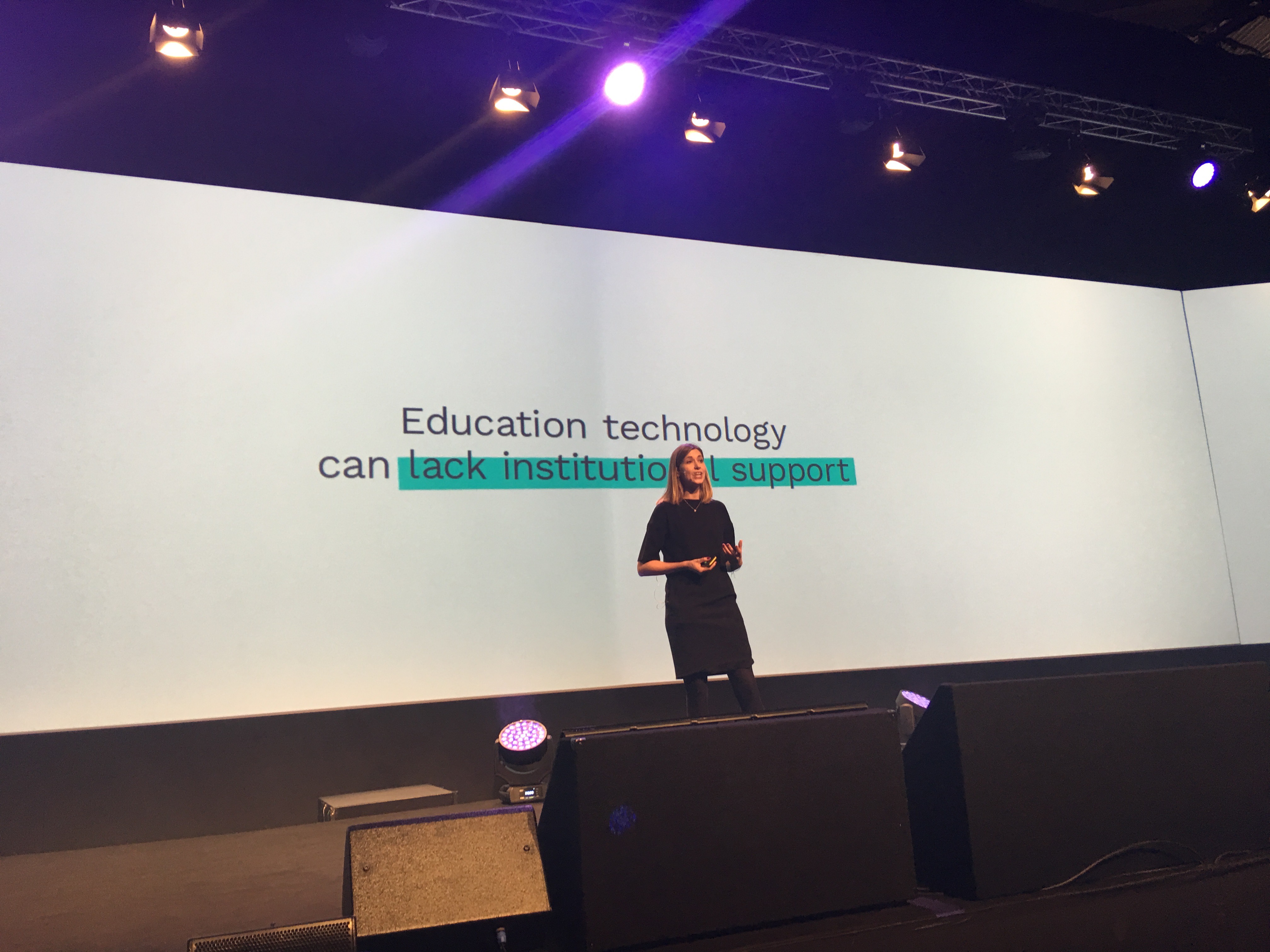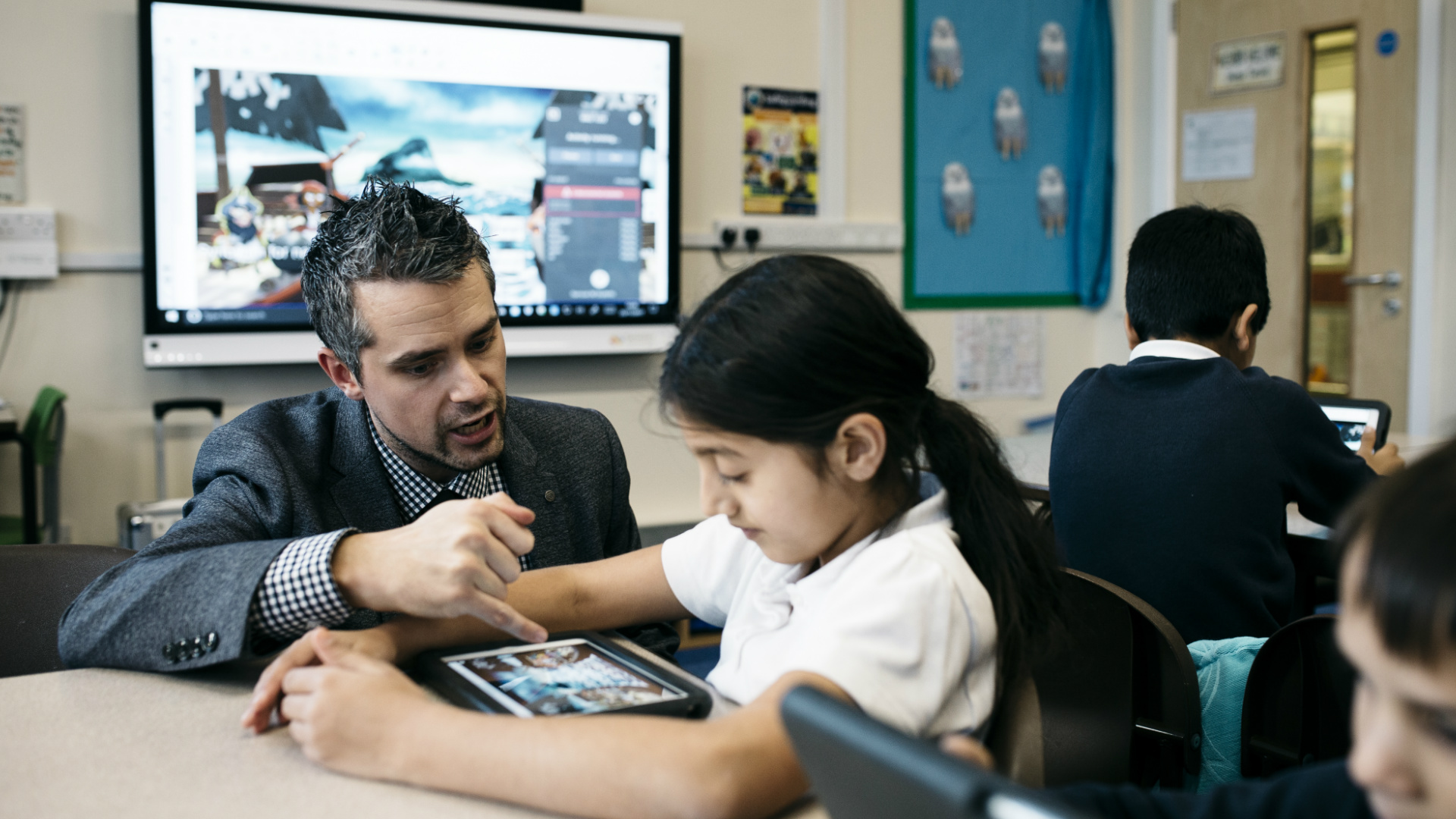Bett 2018: Education technology can lack institutional support
Launch of Innovation Index suggests more buy-in from educators is needed to bolster technology


Technology used in the classroom can often lack institutional support, according to the findings of the newly launched Innovation Index.
Speaking at the Bett Show 2018, Helen Moran, a director at educational market research agency Shift Learning, said the index was "an annual temperature check for innovation in education.
She said that educators "really can see the benefits of education technology "both as a means of saving time and improving educational outcomes".
The results of the survey found that 88 percent of teachers agree that technology in education improves education, but institutions are reluctant to fund it. It also found that the same percentage agreed that it has improved the quality of education in their sector, while 87 percent agreed that it has had a positive impact on educational outcomes. The survey found that 84 percent of educator said technology saved them time.
The survey of over 1,000 educators indicated that the majority of teachers from all over the sector agree that education technology benefits education, but that 42 percent of institutions are reluctant to invest in it. Nearly half (47 percent) stated that the IT infrastructure at their institution inhibits adoption of more education technology.
One respondent to the survey said that most schools are struggling for funding at the moment, but in their experience, the success of innovation depends on how high the driving force is.
"When there is significant management buy-in the pace of change can be exhilarating, without it, innovators can feel like Sisyphus."
Get the ITPro daily newsletter
Sign up today and you will receive a free copy of our Future Focus 2025 report - the leading guidance on AI, cybersecurity and other IT challenges as per 700+ senior executives
The survey found that among the barriers to using technology in education was resistance from other colleagues, integration within the curriculum, and time to implement and use it.
The survey also found that 3D printing appearing to become more mainstream, with 13 percent adopting it in education and 19 percent likely to adopt it. She added that 2017 was the year of blending learning and mobile. A third of respondents have adopted mobile learning, while 28 percent have adopted BYOD.
Augmented reality and virtual reality appear to be emerging as the next big things in education as well as adaptive learning technologies, said Moran.
Rene Millman is a freelance writer and broadcaster who covers cybersecurity, AI, IoT, and the cloud. He also works as a contributing analyst at GigaOm and has previously worked as an analyst for Gartner covering the infrastructure market. He has made numerous television appearances to give his views and expertise on technology trends and companies that affect and shape our lives. You can follow Rene Millman on Twitter.
-
 Bigger salaries, more burnout: Is the CISO role in crisis?
Bigger salaries, more burnout: Is the CISO role in crisis?In-depth CISOs are more stressed than ever before – but why is this and what can be done?
By Kate O'Flaherty Published
-
 Cheap cyber crime kits can be bought on the dark web for less than $25
Cheap cyber crime kits can be bought on the dark web for less than $25News Research from NordVPN shows phishing kits are now widely available on the dark web and via messaging apps like Telegram, and are often selling for less than $25.
By Emma Woollacott Published
-
 How AI innovation is driving educational excellence
How AI innovation is driving educational excellenceSupported Content Generative AI is helping students learn and educators teach, and the classroom of today is shaping the future of work
By Bobby Hellard Published
-
 Transforming higher education for the digital era
Transforming higher education for the digital eraWhitepapers The future is yours
By ITPro Published
-
How classroom tech is getting children excited about STEM
Sponsored Teaching science, technology, engineering and mathematics can be dramatically enhanced by new technology in schools
By ITPro Published
-
 How SMART Technologies transformed the classroom
How SMART Technologies transformed the classroomSponsored Schools have come a long way since blackboards and notebooks – and one tech company has been instrumental in reshaping education
By ITPro Published
-
 A day in the life of a SMART teacher
A day in the life of a SMART teacherSponsored What is it like working with SMART Boards? Mark Hartwright explains how the technology has transformed his teaching
By ITPro Published
-
 The right technology tools for schools
The right technology tools for schoolsSponsored Some things in education are timeless, but that doesn’t mean classroom technology has to be stuck in the past
By ITPro Published
-
 Parenting in the digital age
Parenting in the digital ageSponsored Technology is now a major factor in enabling parental involvement in education
By ITPro Published
-
 Bridging the generation gap between pupils and teachers
Bridging the generation gap between pupils and teachersSponsored How can education remain relevant and engaging with pupils who are potentially more able than their teachers with digital technology?
By ITPro Published